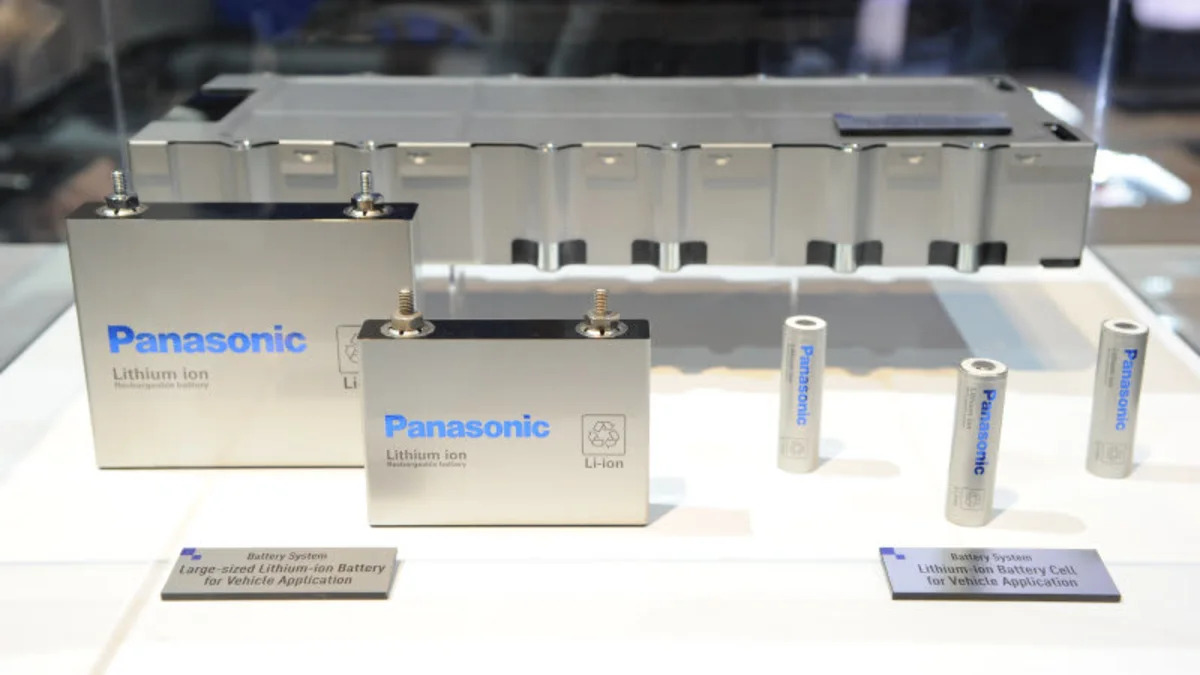As consumers continue to buy more electric vehicles and plug-in hybrids worldwide, lithium-ion battery packs continue to drop in price while offering increasing energy density. So what could possibly be the problem? A global battery-pack shortage, that's what.
Volkswagen Group executive Thomas Sedran says his company may sell as many as 3 million electric vehicles a year within the next decade, and such an expansion, combined with bigger EV sales by other automakers, may spur a battery shortage, according to Automotive News Europe. Sedran's comments contrast with those of Daimler CEO Dieter Zetsche, who said early last year that his company wouldn't invest in battery production because of the possibility of oversupply.
VW estimates that $21 billion in investments in battery capacity will be required to supply its projected increase in EV sales. Meanwhile, Nissan is looking to substantially increase its EV sales in Europe, while Ford estimates that as much as 20 percent of China light-duty vehicle sales will be electric. Daimler and BMW are also looking to increase EV sales, while demand for General Motors' electric and plug-in vehicles are on the verge of a jump as the automaker broadens sales of its new Chevrolet Bolt EV.
The good news is that Exane BNP Paribas is estimating that technological improvements will reduce battery-pack production costs by 50 percent by 2020, even as energy density climbs.
Among lithium-ion battery-cell suppliers, Panasonic has the world's largest market share at 20 percent, while Automotive Energy Supply, LG Chem, and Samsung SDI account for 15 percent, 13 percent and 11 percent, respectively, Automotive News Europe says, citing IHG Markit.
Among automakers, Tesla is rapidly expanding its battery-production capacity, while Nissan makes its Leaf EV batteries in England. Mercedes-Benz parent Daimler ceased production of its own battery-pack cells in late 2015.
Volkswagen Group executive Thomas Sedran says his company may sell as many as 3 million electric vehicles a year within the next decade, and such an expansion, combined with bigger EV sales by other automakers, may spur a battery shortage, according to Automotive News Europe. Sedran's comments contrast with those of Daimler CEO Dieter Zetsche, who said early last year that his company wouldn't invest in battery production because of the possibility of oversupply.
VW estimates that $21 billion in investments in battery capacity will be required to supply its projected increase in EV sales. Meanwhile, Nissan is looking to substantially increase its EV sales in Europe, while Ford estimates that as much as 20 percent of China light-duty vehicle sales will be electric. Daimler and BMW are also looking to increase EV sales, while demand for General Motors' electric and plug-in vehicles are on the verge of a jump as the automaker broadens sales of its new Chevrolet Bolt EV.
The good news is that Exane BNP Paribas is estimating that technological improvements will reduce battery-pack production costs by 50 percent by 2020, even as energy density climbs.
Among lithium-ion battery-cell suppliers, Panasonic has the world's largest market share at 20 percent, while Automotive Energy Supply, LG Chem, and Samsung SDI account for 15 percent, 13 percent and 11 percent, respectively, Automotive News Europe says, citing IHG Markit.
Among automakers, Tesla is rapidly expanding its battery-production capacity, while Nissan makes its Leaf EV batteries in England. Mercedes-Benz parent Daimler ceased production of its own battery-pack cells in late 2015.


Sign in to post
Please sign in to leave a comment.
Continue